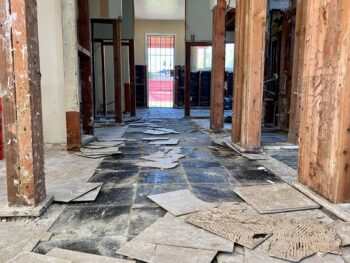An early release of state prisoners likely to happen this year would have a negative impact on public safety in San Diego County, because many released offenders would commit new crimes, County officials said Tuesday.
The prisoner release may also strain a County jail system already pushing capacity because of “realignment,” the state’s 2011 law that sends some sentenced felons to local jail instead of state prison, officials said.
“This is clearly something that is very deeply concerning to all of us in the community,” District Attorney Bonnie Dumanis said of the potential prisoner release and its impacts.
On Tuesday, the County Board of Supervisors voted to officially oppose the planned release of state prisoners into San Diego County, but to devise measures to ease weekend spikes in jail populations in case the release happens.
The potential prisoner release comes after a recent ruling by a federal three-judge court confirmed the panel’s earlier orders directing the State to reduce its chronically overcrowded prison system to 137.5 percent of capacity by the end of this year. Governor Jerry Brown is appealing the ruling to the U.S. Supreme Court, but it is unclear if that effort or local opposition will prevent the court order from talking effect.
“The early indications are not positive,” Supervisor Ron Roberts said.
Under the federal order, the state could release 400 to 800 prisoners into San Diego County by the end of the year.
County officials said, based on historical rates of re-offense, half these released felons could be expected to commit new crimes within a year. That would mean more victims, and more jail space needed once the criminals are re-arrested.
Finding ways to accommodate more prisoners in local jails is nothing new. Since realignment took effect in 2011, County criminal justice departments have worked together to deal with the new laws that, among other effects, see hundreds of felons each year now sentenced to local jail instead of prison.
Realignment was the state’s solution to the three-judge panel’s order to reduce prison population. However, earlier this year, the judges ruled that realignment had not sufficiently eased prison overcrowding.
Previous local efforts to deal with the influx of inmates under realignment include a 400-bed re-entry facility at the East Mesa Detention Center scheduled to open next year and holding up to 300 prisoners at home on electronic monitoring or GPS in the Sheriff’s new County Parole and Alternative Custody Unit.
But even with new measures, jail capacity is pushing 100 percent each weekend, with 32 percent of inmates there due to realignment.
“All of this forward thinking aside, we can’t stop thinking innovatively,” Supervisor Roberts said.
Tuesday’s Board action directed the District Attorney, Sheriff, Public Defender and County criminal justice staff to collaborate to use technology and innovative processes to reduce spikes in local jail populations over the weekends and holidays.
Supervisor Roberts said this could mean video arraignments or weekend courts.
Jail populations spike over the weekend because people arrested on Friday, Saturday and Sunday have no Court hearing until Monday or Tuesday. At those hearings, some people are released without charges, and some low-level offenders are released on bail.
DA Dumanis said, despite the County’s opposition to the state’s prisoner reduction plans, the County, community and Superior Court would work together to respond.
“We have been collaborating with our criminal justice partners, and we have got to put our collective minds together to make sure we look at every possible avenue to make sure our communities are safe,” she said.
In a sign of the County’s collaborative criminal justice climate, County Public Defender Henry Coker voiced his support for Tuesday’s Board action and for efforts to preserve jail space for serious offenders.
Staff was directed to report back to the Board of Supervisors in 90 days to detail new measures that would reduce weekend jail populations.





